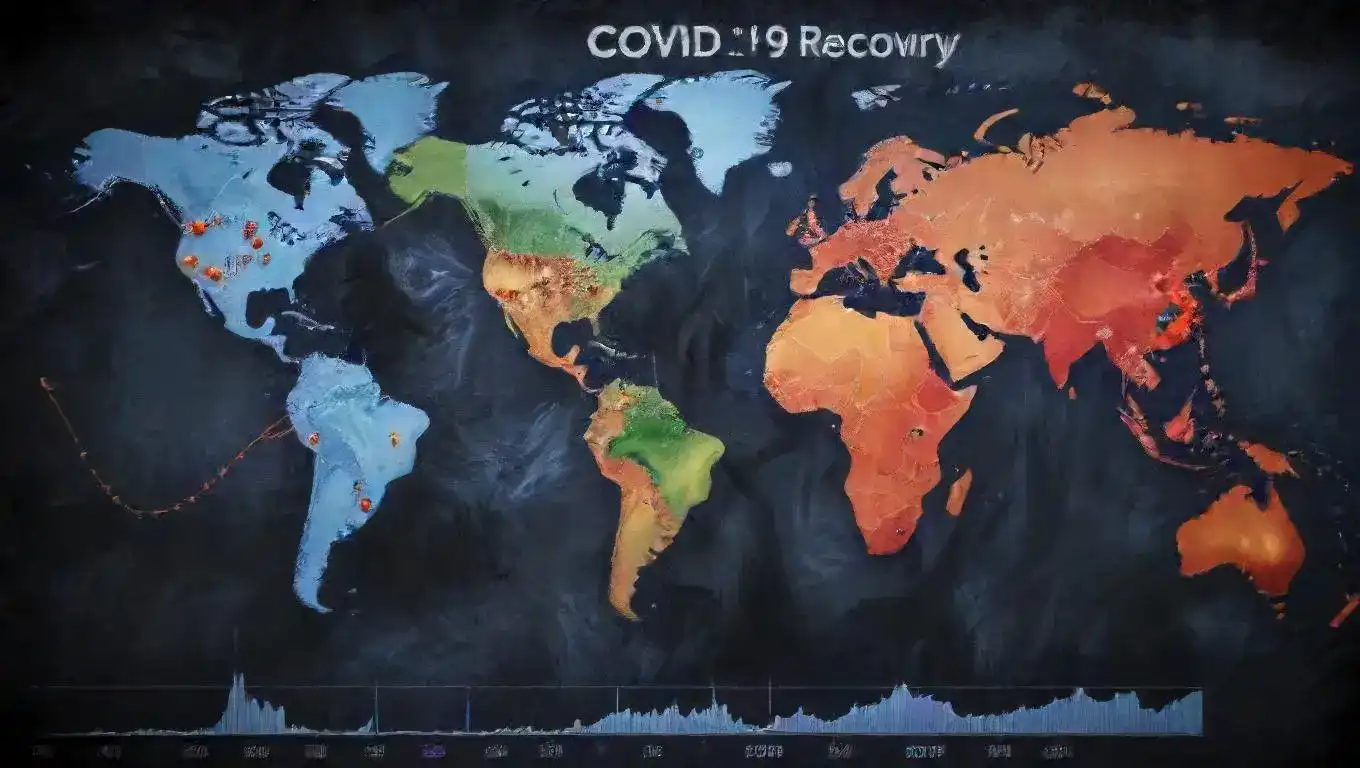Gain Competitive Edge in Any Market
Emily Willis

Photo: Gain Competitive Edge in Any Market
Gaining a Competitive Edge in Any Market: A Comprehensive Guide
In today's dynamic and interconnected global marketplace, the pursuit of a competitive edge is no longer a luxury but a fundamental necessity for sustainable business growth and market leadership. Businesses, regardless of their size or industry, face relentless competition and rapidly evolving consumer demands. To not just survive but thrive, organizations must continuously seek ways to differentiate themselves, optimize operations, and deliver exceptional value. This article will delve into actionable strategies and key principles that empower businesses to gain competitive edge in any market, fostering long-term success and resilience.
Understanding the Landscape: The Foundation of Competitive Strategy
Before charting a course for market advantage, it's crucial to understand the environment you operate within. A thorough understanding of your competitive landscape and internal capabilities forms the bedrock of any effective competitive strategy.
Market Analysis and Research
To truly gain competitive edge, businesses must first grasp the nuances of their target market. This involves more than just identifying potential customers; it means understanding their evolving needs, preferences, and pain points. Robust market research helps uncover unmet demands and emerging trends, providing invaluable insights. For instance, data from Statista suggests that 77% of consumers prefer brands offering personalized experiences, underscoring the importance of understanding individual customer needs.
Competitor Analysis
Knowing your rivals is as important as knowing your customers. A comprehensive competitor analysis involves evaluating their strengths, weaknesses, strategies, and market positioning. What are they doing well? Where are their vulnerabilities? By routinely monitoring competitors, businesses can identify opportunities for differentiation and avoid being blindsided by new entrants or disruptive innovations.
SWOT Analysis
A classic yet powerful tool, the SWOT (Strengths, Weaknesses, Opportunities, Threats) analysis, helps businesses assess their internal capabilities and external environment. This self-assessment, combined with market and competitor insights, can reveal unique strengths to leverage and weaknesses to address, ultimately informing a robust competitive strategy.
Pillars of Competitive Advantage
A sustainable competitive edge is built upon multiple interconnected pillars, each contributing to a stronger market position.
1. Innovation and Differentiation
Innovation is arguably the most potent driver of competitive advantage. It's about more than just creating new products; it encompasses new processes, business models, and customer experiences. Companies that effectively innovate can outperform competitors and become standouts in their field.
- Product/Service Differentiation: This strategy focuses on making your offering unique in design, functionality, or perceived value. Examples include Tesla's innovation in electric vehicles and sustainability or Apple's iconic designs and continuous technological advancement. A differentiation strategy allows businesses to charge higher prices and build strong brand loyalty.
- Process Innovation: Streamlining internal operations, reducing waste, and improving efficiency can lead to significant cost advantages and faster delivery, enhancing your market advantage.
- Business Model Innovation: Redefining how value is created and delivered can disrupt entire industries. Netflix, for example, transformed from a DVD rental service to a global streaming giant by continually expanding and experimenting with new content forms and delivery models.
- Cultivating an Innovation Culture: Encouraging employees to experiment, share ideas, and embrace risk is vital. Companies that foster this mindset are more likely to adapt to change and seize new opportunities.
2. Customer-Centricity
In an age of abundant choices, the customer experience has become a primary differentiator. Customer-centricity means designing your business around what customers truly need and consistently delivering on those expectations.
- Understanding Customer Needs: Go beyond basic demographics to understand customer behaviors, preferences, and pain points. This deep insight allows for tailoring products, services, and marketing messages that resonate deeply.
- Exceptional Customer Experience (CX): Businesses that prioritize CX often see higher profitability and customer retention. A study by Walker predicts that by 2025, customer experience will surpass price and product as the key brand differentiator. Customer-centric companies are reportedly 60% more profitable than those that are not.
- Personalization: Leveraging data to offer personalized recommendations and tailored solutions can significantly enhance customer satisfaction and loyalty.
3. Operational Excellence
Achieving operational excellence means maximizing operating profit by creating as much value as possible with available resources. It's about continuous improvement across all aspects of the organization, leading to enhanced efficiency, agility, and innovation capability.
- Process Optimization: Streamlining workflows, automating repetitive tasks, and reducing errors can boost productivity and cut costs.
- Quality Management: Consistently delivering high-quality products or services builds trust and reduces rework, contributing to a stronger market position.
- Lean and Agile Methodologies: Implementing frameworks like Lean, Six Sigma, or Agile can foster a culture of continuous improvement, enabling quicker adaptation to market changes and better resource utilization.
4. Strategic Niche Targeting
Rather than trying to appeal to everyone, focusing on a specific niche market can create a powerful competitive edge. This involves identifying a smaller segment within a larger audience with distinct needs that are not being fully addressed by mainstream providers.
- Specialized Solutions: By dedicating efforts to a well-defined segment, businesses can tailor products and services to meet very specific needs, enhancing customer satisfaction and loyalty.
- Reduced Competition: Niche markets often have less competition, allowing businesses to establish themselves as experts or leaders in that specific area.
- Premium Pricing: Specialization can justify higher profit margins and premium pricing due to the unique value offered.
5. Strong Brand Building
A powerful brand goes beyond a logo; it's the sum of perceptions consumers have about your company. A strong brand can create a significant competitive advantage by fostering recognition, trust, and loyalty.
- Unique Value Proposition (UVP): Clearly articulate what makes your business distinct and valuable to your target audience. This UVP should be concise and consistently communicated across all marketing efforts.
- Consistent Messaging: Ensure your brand story, values, and benefits are consistently conveyed through all touchpoints, from marketing materials to customer service interactions.
- Building Reputation: A positive reputation for quality, reliability, and customer service can significantly enhance brand loyalty and attract new customers.
6. Talent and Culture
Your employees are your greatest asset. A skilled, motivated, and engaged workforce can be a profound source of competitive edge.
- Attracting and Retaining Top Talent: Innovative companies naturally attract top talent, creating a virtuous cycle where talented individuals drive further innovation.
- Fostering a Positive Culture: A culture that empowers employees, encourages continuous learning, and values their contributions can lead to higher productivity and better problem-solving. Operational excellence, for instance, thrives when employees are encouraged to identify problems and suggest improvements without fear of criticism.
Strategies for Sustained Competitive Edge
Achieving a competitive edge is an ongoing journey, not a destination. Sustaining it requires continuous effort and strategic foresight.
Continuous Improvement and Adaptability
The business world is constantly changing. Companies must embrace a mindset of continuous improvement to adapt to market shifts and emerging trends. This involves a steady stream of small, incremental changes that lead to better products, services, and processes.
- PDCA Cycle: The Plan-Do-Check-Act cycle provides a systematic approach for continuous improvement, allowing businesses to refine processes and test changes on a small scale before broader implementation.
- Organizational Agility: An agile business model allows companies to respond rapidly to market changes, customer demands, and technological advancements.
Leveraging Technology and Data
Technology is a powerful enabler for gaining competitive edge by enhancing operational efficiency, improving customer experience, and driving innovation.
- Data-Driven Decision Making: Utilizing analytics and AI to harvest insights, predict trends, and make informed decisions can provide a significant advantage. This externally informed mindset reduces vulnerability to biases and enables rapid course correction.
- Automation: Automating repeatable tasks increases efficiency, reduces costs, and ensures consistent outcomes, leading to increased client satisfaction.
- Improving Customer Experience with Tech: Chatbots, personalized recommendations, and multichannel support can significantly enhance customer engagement and satisfaction.
- Cybersecurity: Protecting business and customer data is paramount. Robust cybersecurity measures are essential to maintain trust and operational integrity.
Building Strategic Partnerships
Collaborating with other entities can amplify capabilities, pool resources, and accelerate growth. Strategic partnerships offer a competitive advantage by providing access to new markets, increasing expertise, and boosting revenue streams.
- Complementary Strengths: Partnering with businesses that possess complementary skills or technologies can enhance offerings and improve operational efficiency.
- Market Expansion: Collaborating with partners who have an established presence in different geographical or market segments can provide access to new customer bases.
- Innovation Ecosystems: Strategic alliances foster an environment of innovation by bringing together diverse perspectives and expertise, leading to the development of innovative solutions.
Measuring and Maintaining Your Edge
To ensure your competitive strategy is effective, it's vital to measure its impact and continuously refine your approach.
- Key Performance Indicators (KPIs): Track metrics such as market share, brand awareness, customer satisfaction (
Latest ✨
View AllRevolutionize your learning! Data analytics is the future of education, enabling personalized paths & unlocking individual potential.
Emily Willis
Cloud computing is essential for modern businesses, offering cost savings, scalability, and improved collaboration. Implementing cloud computing requires careful planning to ensure safety and efficiency. Tips for safe and efficient implementation include conducting a needs assessment, choosing the right cloud service model, prioritizing security, planning for data migration, optimizing costs, training your team, implementing backup and recovery solutions, monitoring performance, planning for scalability, and staying updated with industry trends.
Emily Willis
effective leadership in a constantly changing world and explores the traits and habits of inspiring leaders, both historical and contemporary. It highlights the key lessons from leaders such as Nelson Mandela, Martin Luther King Jr., Jacinda Ardern, Elon Musk, and Malala Yousafzai.
Emily Willis
Customer feedback is a goldmine for business growth. Learn how leveraging insights enhances products, builds loyalty, and keeps you competitive.
Emily Willis
Business
View All
June 9, 2025
Cloud Computing for Small BusinessUnlock growth & efficiency! Discover how cloud computing empowers small businesses with cost savings & agility in the digital age.
Emily Willis

June 9, 2025
Customer Retention Strategies That WorkUnlock lasting success! Learn proven customer retention strategies to build loyalty, reduce churn, and boost your business growth.
Emily Willis

June 8, 2025
Strategic Planning for Long-Term WinsChart your course to enduring success! This article demystifies strategic planning, offering an actionable framework for long-term wins and sustainable growth.
Emily Willis
Economy
View AllBoost your business profits! Discover actionable strategies to maximize revenue and efficiently manage costs for sustainable growth.
Read MoreUnpack the 17 Sustainable Development Goals (SDGs): a global blueprint addressing poverty, climate change, and inequality for a sustainable future.
Read MoreThe COVID-19 pandemic has had a significant impact on the global economy, leading to market turmoil, disrupted supply chains, and widespread business closures. As countries slowly recover, there are questions about the future of the global economy. While there are signs of recovery, challenges such as rising inflation, uneven global recovery, labor market disruptions, and supply chain bottlenecks remain. To ensure a sustainable recovery, policymakers must continue to support vulnerable sectors, invest in education and reskilling, strengthen healthcare systems, promote supply chain resilience, address inequalities, and prioritize sustainability.
Read MoreEntertainment
View All
August 4, 2024
The Latest Music Trends, Artists Influencing Pop Culture, and How Digital Platforms Facilitate the Distribution of Music GloballyThe music industry is constantly changing due to consumer preferences, technology, and the influence of artists. Digital platforms have revolutionized music creation, distribution, and consumption, leading to genre fusion, the rise of independent artists, and collaborative projects. Influential artists like Billie Eilish, BTS, and Taylor Swift have shaped pop culture globally. Streaming services, social media, and direct-to-fan engagement have transformed music distribution. Digital platforms also promote cultural diversity and inclusivity, expand markets and revenue, and drive technological advancements. The industry is also focusing on sustainability and ethical practices. To succeed in the future, stakeholders must embrace digital transformation and champion inclusivity.
Emily Willis

August 4, 2024
The Evolution of Streaming Services Such as Netflix, Disney+, Hulu, and the Implications for the Traditional Entertainment IndustryThe rise of streaming services has revolutionized the entertainment industry, offering on-demand access to a vast library of content through internet-connected devices. Platforms like Netflix, Disney+, and Hulu have diversified their content libraries, reshaped consumer behavior, and challenged traditional distribution models. Technological advancements have enhanced streaming experiences, while economic and cultural implications have led to global market expansion and increased investment in original content production. The future of the streaming industry will be shaped by competition, convergence of media and technology, and the need for adaptation to changing consumer preferences. Embracing digital transformation and strategic partnerships will be crucial for stakeholders in navigating the evolving landscape of modern entertainment.
Emily Willis

August 5, 2024
Entertainment in Society: Social Impact, Cultural Influence, Economic ContributionsEntertainment is more than just a way to pass the time it has a significant impact on society, culture, and the economy. It promotes empathy, sparks conversations, and drives social change. It reflects and shapes cultural trends, while also preserving traditions. The entertainment industry generates jobs, contributes to economic growth, and drives technological innovation.
Emily Willis
Health
View Allsignificance of mental health awareness in today's fast-paced world. It discusses the importance of understanding mental health, breaking down stigma, and promoting positive mental health practices.
Emily Willis
Regular physical activity is crucial for maintaining long-term health and well-being. It has numerous benefits, including improving cardiovascular health, aiding in weight management, enhancing mental health, strengthening bones, boosting immune function, and promoting longevity.
Emily Willis
The healthcare landscape is being transformed by technological advancements, with telehealth and remote care providing convenient access to healthcare services. Artificial intelligence is revolutionizing diagnostics, personalized medicine, and drug discovery. Wearable technology is empowering patients to take control of their health.
Emily Willis
Trending 🔥
View All
1
2
3
4
6
7
8
9
10
Lifestyle



Sports
View AllAugust 5, 2024
Inclusive Playing Field: Creating a Welcoming and Accessible Sports Environment
Read MoreTechnology
View All
August 4, 2024
The Future of Artificial Intelligence: Opportunities and Challenges
opportunities and challenges presented by Artificial Intelligence (AI) in various sectors such as efficiency, customer experiences, healthcare, education, and economic growth. It highlights the need to address ethical considerations, job displacement, privacy issues, security risks, and regulatory challenges associated with AI.

August 5, 2024
Best AR Apps for Interior Design
Discover the top AR apps for interior design and transform your space with ease! From furniture placement to paint colors, these innovative tools will revolutionize the way you decorate, making your home design dreams a reality

August 5, 2024
Types of Cloud Computing Services Available
Cloud computing has become essential for modern businesses, offering services that streamline processes, reduce costs, and increase flexibility. Understanding the types of cloud computing services available, such as Infrastructure as a Service (IaaS), Platform as a Service (PaaS), and Software as a Service (SaaS), can help businesses make informed decisions.

August 5, 2024
Best AR Translation Apps Tested
Uncover the best AR translation apps on the market through our in-depth testing and reviews. From seamless voice conversations to real-world text translation, these apps will revolutionize the way you communicate across languages.

















